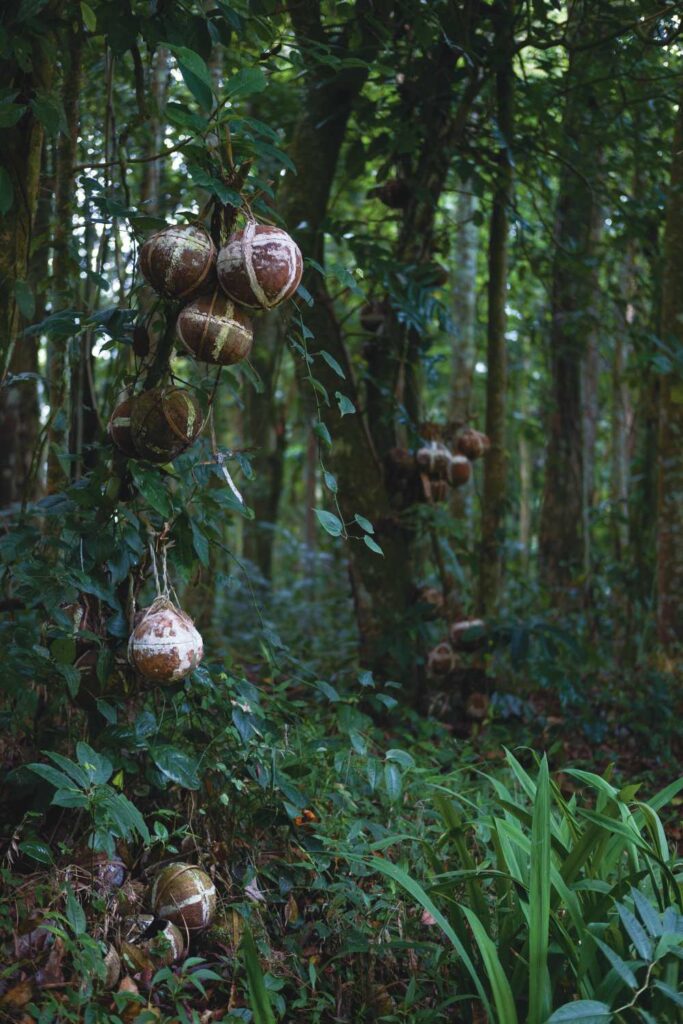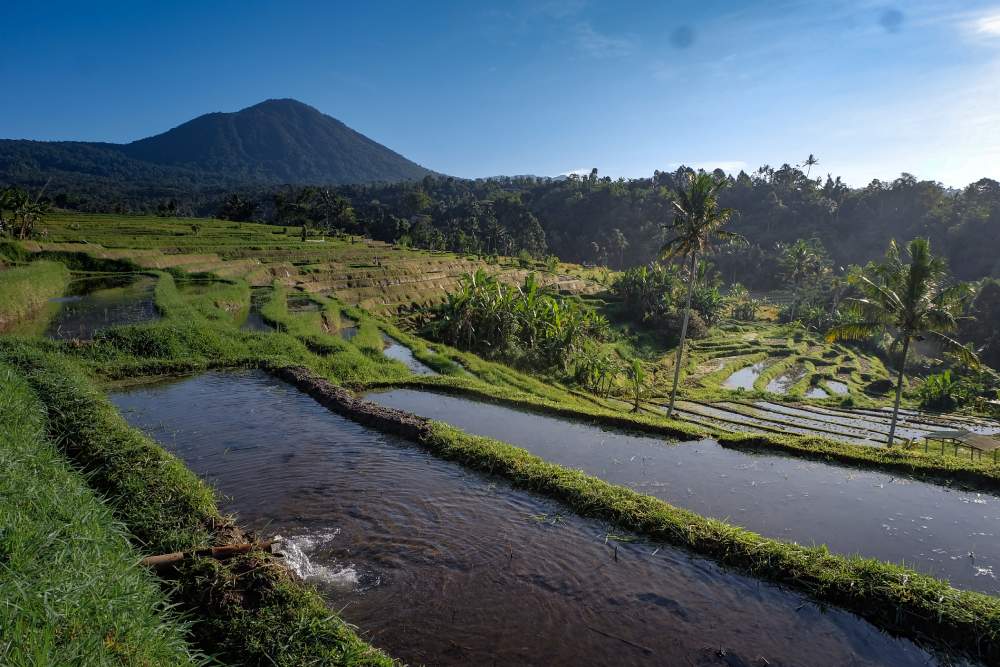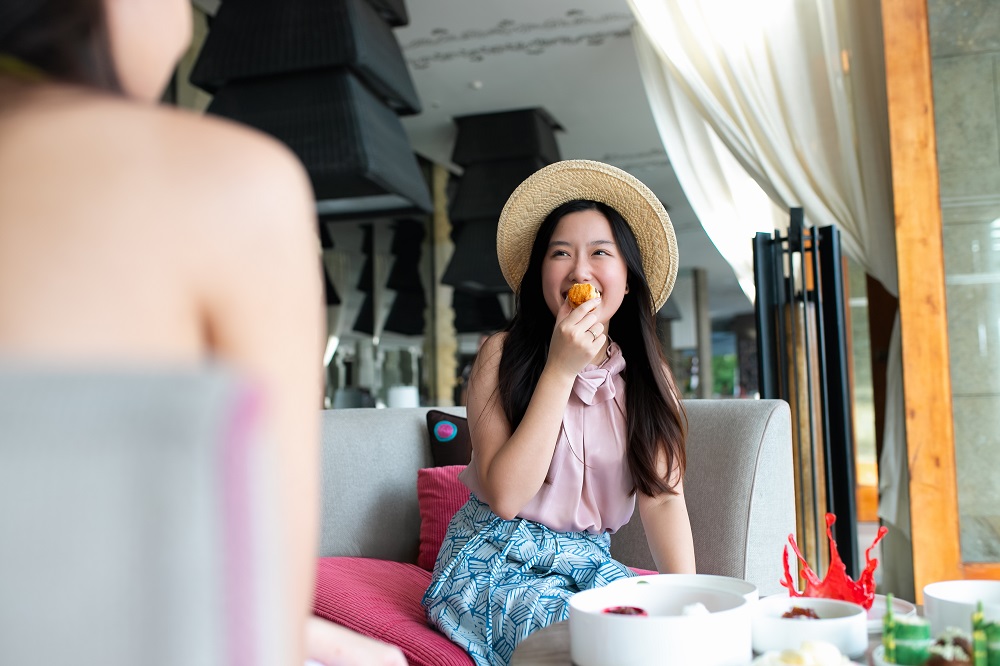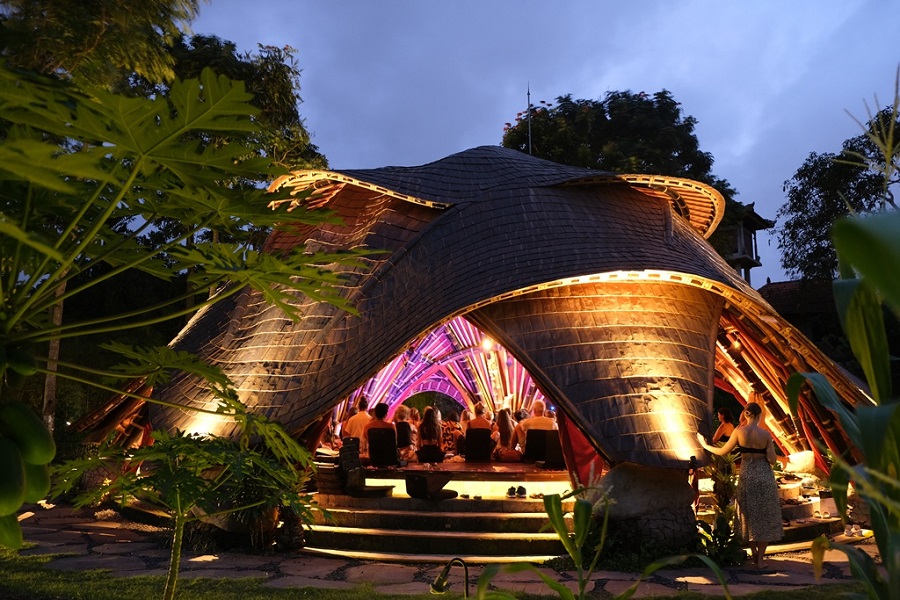
A unique custom takes place in one of Bali’s mountain villages, whereby the placentas of newborn babies are placed inside coconuts and hung on trees. Setra Ari-ari, or the placenta graveyard, is certainly one of Kintamani’s more obscure destinations.
Bayung Gede village is neatly tucked into one of the gaping valleys of Kintamani. It is certainly off the beaten track, accessed off the main artery road from Ubud to the Batur Caldera. Moss and foliage layer the stone gapura entrance into the village, like a signal to visitors that this is a place lost to time. Bayung Gede is certainly quaint, it is a Bali Aga village after all, home to the descendants of ‘indigenous’ Balinese who did not conform to the Majapahit Empire when they invaded in 1343. As is the case in other Bali Aga villages, like Trunyan or Tenganan, their customs differ slightly, isolation providing the perfect protection.
Before the placenta custom became their unique calling card, Bayung Gede was made internationally recognised for another reason. It was the village in which anthropologists Margaret Mead and Gregory Bateson lived in the 1930’s. “Here, among the Bali Aga, they believe they had found Balinese culture stripped to its essentials; a place where they could understand the ‘ground plan of the culture’,” Robert Pringle writes of the anthropologists in his book, ‘A Short History of Bali’.


At the most southern end of the village, an enclosed forest area borders the roadside. Even from the boundaries, the curious coconuts can be seen, at first appearing like the tree’s natural fruits. They are specifically hung on young pohon bukak, the Balinese name for the sea mango tree (Cerbera manghas), believed to absorb the smell of the hanging placenta. Once hung, they are not administered to; if they fall naturally, they remain there; old and empty coconut husks can be seen scattered along the forest floor.
It’s important to note that most Balinese Hindu will such attention to the placenta. It is considered one of the ‘four siblings’ (catur sanak) with which all humans are born with, including amniotic fluid, blood and the vernix caseosa (the biofilm around a newborn). As they all ‘enter the world together’, they are considered siblings and in fact play an important part of ritual life for each person. In regular cases, the placenta, being the only substantial remnant of the birthing material, is treated with spice and holy water, sealed in a coconut and buried in front of one’s home. They too now live in this home.
As such, this special treatment to the ari-ari is not unique to Bayung Gede, but certainly the custom to hang them up on trees is something one will only see at this Bali Aga village.


